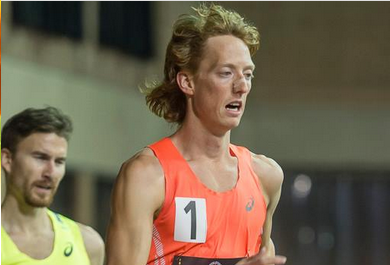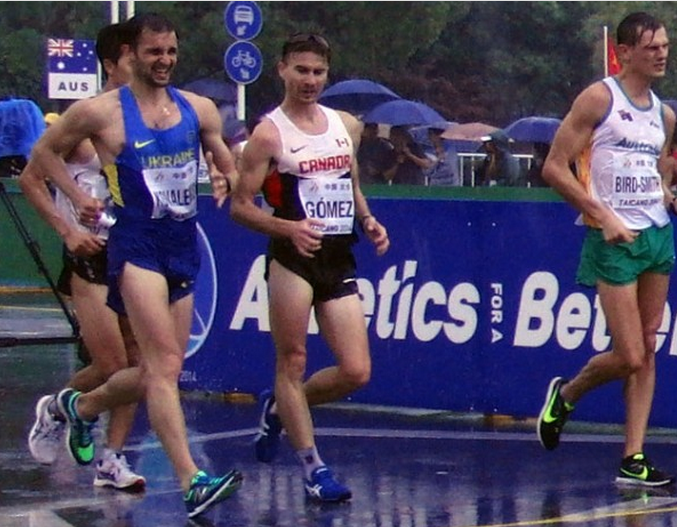What you never thought to ask about race walking

Race walking. What an interesting yet mysterious sport. Many runners disregard it thinking it’s just a slower version of what we do. But do you really know what race walking is all about? Canadian Pan Am athlete Evan Dunfee explains how the race walk works.

One of Evan Dunfee’s earliest memories of testing his talent in the race walk was his first 800m race in B.C. when he was just a kid. He stepped onto the track ready to give it his best shot when his main competitor from Kamloops asked him what his goal time was. Dunfee told him but his competition dismissed him. On a first try? No way. He’d never do it. “I beat that kid and I beat the time I was hoping for by a couple of seconds. I got a medal and a big trophy for doing it, so I thought I could keep doing it,” says Dunfee. “I was actually 11 and my brother had been trying it. He was having some success and I thought if he could do it I could do it and got him to show me how to do it.”
Fast forward over a decade and Dunfee is the Canadian record holder in the 20K race walk and is getting geared up to race the distance at the Pan Am Games on Sunday, July 19 in Toronto. He and his competition walk this distance and others faster than many runners could hope to run– think 1:20 for 20K or 4:00/ kilometre. For many runners, the technicalities of this cousin sport are a little fuzzy. And actually, some of the rules are pretty technical. So what do you not know about race walking?
How it works

Unlike running, when race walking, a foot has to be on the ground at all times. The front leg cannot be bent, the knee is not allowed to bend. “There’s about eight judges watching us while we’re walking it and if you get three red cards, you’re kicked out of the competition. And you need to have three warnings from three different judges. You can’t just have one judge who doesn’t like you,” says Dunfee. He can’t explain the sport without being asked something about the walker’s waddle.
“We’re very limited in how we can maximize stride length,” he says explaining that walkers don’t have the option of jumping from foot to foot like runners do. “So we lengthen out stride by opening our hips, which is why we get that hip waddling. It allows us to get an extras three to four centimetres more out of our stride, which over 20 or 50K, adds up,” says Dunfee.
As for the stereotype that walking isn’t as good as running? “I don’t think that’s the case,” says Dunfee. “I think people are definitely justified in thinking it’s a strange event. But the thing I try to tell people who have no inherent interest in running, is that if you compare the marathon and the race walk, you see the guys,” he says explaining that laps of a two kilometre route involves more crowd interaction with athletes than disappearing on 10K loops in a marathon.
How do walkers train?
Walking training doesn’t differ much from running training, surprising as it might sound. “My heart heart over 5K outright averages about 190. My vo2 max is about 76 or 77 right now,” says Dunfee. As for his workouts, if you’ve trained for a longer distance, it will sound familiar. His weekly mileage is between 180 and 200K and his workouts include long walks, tempo and speed work. Swap the words “walk” for “run” and you’ve got very similar fitness routines.
The Pan Am Games walk
Sunday’s race starts at 7:00 a.m. for the women and 9:50 a.m. for the men. Lucky for the audience, it’s a free event. Walkers will race in hot, humid conditions. One thing that Dunfee notes is that the top walkers in the world will be present. In running, oftentimes certain countries opt for sending a B team. That’s not so for walking. “We’re moving at about 15km/h, 4:00 kilometres,” says Dunfee. “We’ve got probably about six guys in the race ranked in the top 20 in the world, so it’s a very competitive field.”


